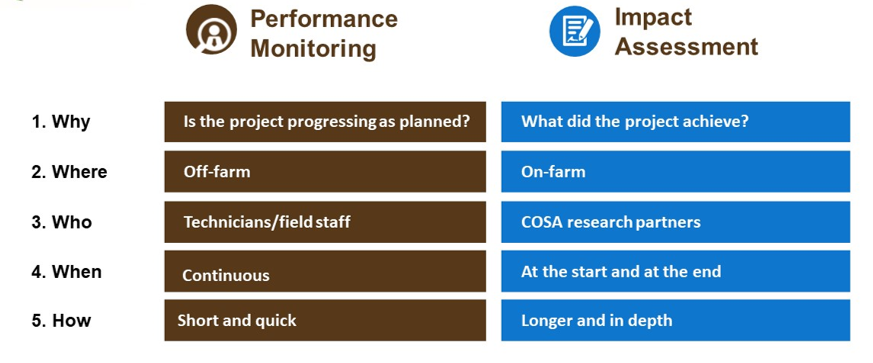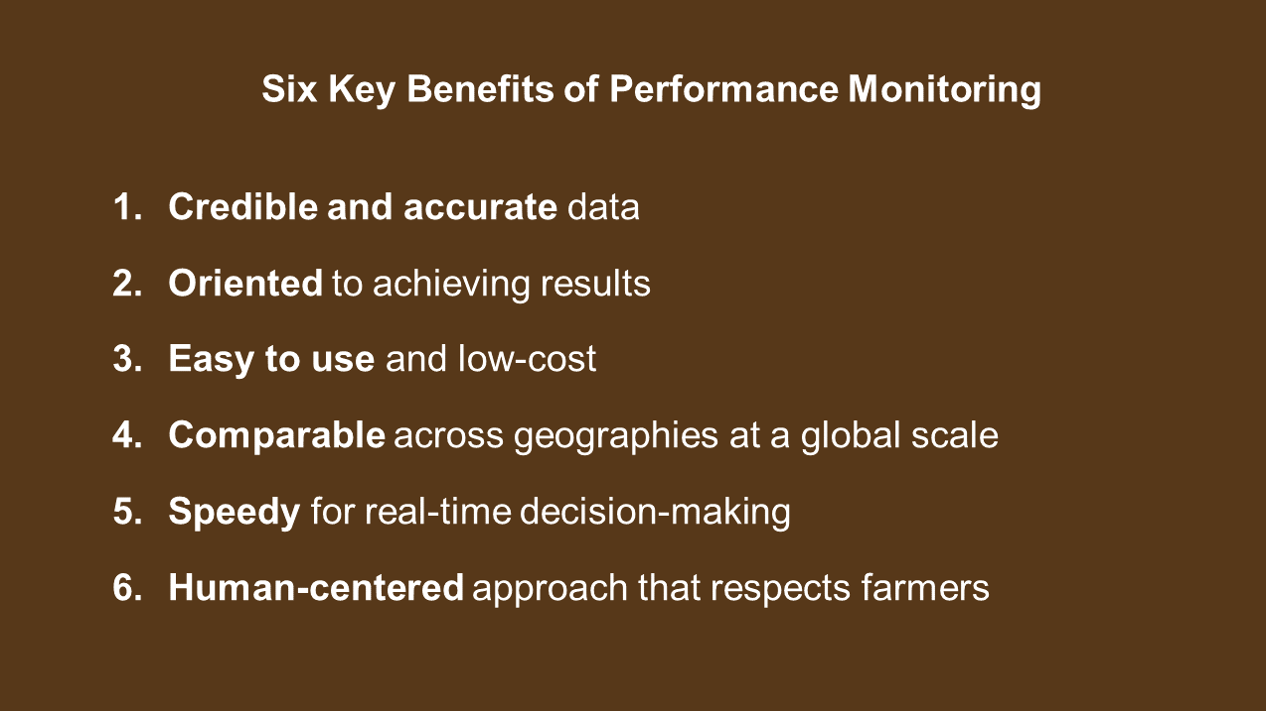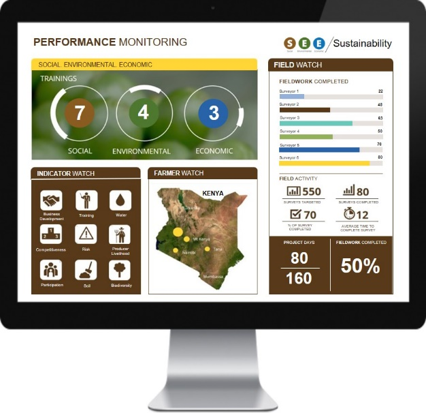Published in Coffee & Cocoa International, January 2019
Sustainability has not been held to the same results-based standards of achievement as other business mandates such as efficiency, competitiveness, and profitability. As sustainability becomes a critical competitive factor, some leading companies have elevated their sustainability efforts to a results-based model. Here’s how they did it.
Business is always results-based. Sustainability mostly isn’t. In part, that is because it is easy to agree on many business metrics. It is also because sustainability has not been held to the same standard of achievement as business mandates such as competitiveness and profitability. Most would agree that is no longer acceptable.
When managers monitor the Key Performance Indicators (KPI) that are directly linked to their sustainability results they can advance sustainability just as they do their business results.
It is true that sustainability metrics have greater complexity, a much shorter history, and limited standardization – at least until recently. As sustainability becomes a critical competitive factor in almost every industry, some leading companies have elevated their sustainability efforts to a results-based model. Here’s how they did it.
Early lessons
The business leaders with more than just a surface commitment to sustainability know that you cannot manage what you cannot measure. However, early efforts in the last two decades by companies as diverse as Mars, Mondelēz, Nespresso, and Walmart discovered that measuring the multi-dimensionality of sustainability is not always easy. They know that they need to measure intelligently and credibly. As experience has mounted, there is now substantial clarity on how to optimally measure almost any sustainability efforts.
We also have a better understanding of how some companies and even some non-profit organizations measure in ways that are misleading or biased. Ineffective programs typically only measure practices such as training. That is like measuring school attendance instead of measuring how much children are actually learning. Instead, leaders who want to manage for results look at performance. You have to be able to get the answers to the questions ‘’is a project doing things right? Is it doing what it set out to do?’’ Measuring practices that rely only on compliance to checklists or standards will not give you those answers and can obscure a realistic understanding of sustainability.
The inherent simplicity of Performance Monitoring – taking a reasonable number of key metrics and integrating them into the operations that a business is already conducting – makes it minimally disruptive, and more likely to be wholly adopted by companies and organizations.
A clear advantage: it’s simple, accurate, and cost-effective
In the hands of professional users, Performance Monitoring is an efficient and effective tool to help managers easily and quickly track the critical factors that are vital to the success of their sustainability initiatives. If you are going to monitor something, there is no point in doing it inaccurately. So, a viable Performance Monitoring system is typically formulated on the basis of the more scientific approaches utilized in verifiable impact assessments. This basis in rigorous methods gives Performance Monitoring its credibility. Its practicality stems from being distilled down into an easy-to-use tool that can be cost-effectively applied throughout the implementation of a program or in any supply chain. Typically, managers use it to track current progress and quickly identify areas for corrective action. The ability to provide rapid learning about programs and investments contributes to improved service delivery and even better returns on investment.
Performance Monitoring gathers simple data, typically using local field staff as part of their normal work. It can be managed in real-time to systematically offer vital information into management feedback loops. Unlike impact assessment, it does not require substantial investment or advanced skills.
Performance Monitoring vs Impact Assessment

Up until the early days of the Mondelēz-JDE merger that formed the world’s second-largest coffee company, Mondelēz was establishing itself as a respected sustainability leader. It managed complex supply chains across three continents and was investing in different approaches ranging from certification to direct training and other programs. To ensure that its multi-million dollar annual commitments were effectively spent, we worked together to establish the right KPIs and a simple system to measure progress against its goals.
This not only gave them useful data on their investment performance but also improved their relationships with trading partners whose local field staff were trained to gather simple data, in a very cost-effective manner, from representative groups in each of the supply chains.
Engaging locally for transparency and accountability
Performance data typically flows into a visual dashboard that quickly reveals the strengths and weaknesses of a program or investment. For Mondelēz, dashboards also enabled unprecedented transparency because supply chain partners could see their own tangible progress toward results. This opened up an unparalleled ability to collaborate and greatly improved accountability. Managers reported an increased understanding and were stimulated to improve the efficiency and the effectiveness of field operations.
By using performance to open up results-based collaborations with local partners Mondelēz was increasing the chances for success. It also applied best practice to engage partners early on in the selection of KPIs and thus evolved lasting relationships helping to ensure optimal future supply. Those results are confirmed by other users of these technologies.
For S&D Coffee, one of the largest coffee roasters and tea importers in North America, there was initial skepticism among some of its suppliers about building data-relationships with farmers. That changed as the data served to stimulate an unexpected array of benefits for farmers, traders, and the firm. The achievement also elevated the standing of S&D as a credible sustainability leader among its corporate clients.
One of the largest Honduran organizations with commitments to sustainability used the Performance technology not just to report to foreign buyers but also to drive a much more accurate understanding of more than 14,000 farmers across different regions so that it could deliver services and do business more effectively.
Sustainability Intelligence
Performance Monitoring can stand alone as a valuable tool to achieve sustainability results. But when integrated into a comprehensive Sustainability Intelligence System, it can also provide an exceptional understanding of risk and strengthen competitiveness. Structured Sustainability Intelligence starts with a strong focus on indicator selection, to measure important objectives. COSA as well as The William Davidson Institute (WDI) at the University of Michigan have long advocated the use of SMART principles in their metrics and ensured their alignment with international norms. There is also attention given to good survey development and appropriate sampling methods. A Sustainability Intelligence System goes further to integrate other aspects of sustainability including traceability, compliance, verification, and technologies such as analytics and data visualization that facilitate the transformation of data into management knowledge.
WDI found that systematically collecting performance data using a Management Information System would afford business the opportunity to conduct real-time and nearly instantaneous analyses of relevant factors. Its work with global dairy giant Danone on a project with low-income women entrepreneurs demonstrated that this could be transformative even in challenging situations. They found that regular monitoring could inform key decisions, such as targeting the appropriate types of investment, training, and management appropriately to each woman.
Dashboards updating results are a visually captivating part of a Sustainability Intelligence System
It is not just companies that need credible performance data
Our public institutions – including donors, governments, and NGOs – could certainly improve their results by applying more business-like tools to manage performance rather than merely measuring activities. This is especially true for public-private platform collaborations where Performance Monitoring can ensure accountability, identify areas for corrective action, improving service delivery, and serve as a vehicle for joint learning.
The InterAmerican Development Bank’s Lab pioneered performance-based metrics in its 20+ projects funded by its Sustainable Food, Agriculture and Environment (SAFE) Platform. It is evolving to serve as a model the collective learning and innovation among its public-private partnership investments with an array of small and large organizations. Not only does the institution benefit from its learning, so do leading firms such as Keurig, ECOM, and Sustainable Harvest.
If sustainability results matter, then Performance Monitoring makes perfect sense because relevant, real-time metrics are necessary to achieve accountability and credible results.
- This article draws from the work of The Committee on Sustainability Assessment (COSA), and the William Davidson Institute (WDI) at the University of Michigan. Some of the cases were included in an academic textbook to be published by Springer Publishing; the authors are Jessica Mullan, Heather Esper and Daniele Giovannucci.
- Specific, measurable, achievable and actionable, realistic, trackable









Leave A Comment